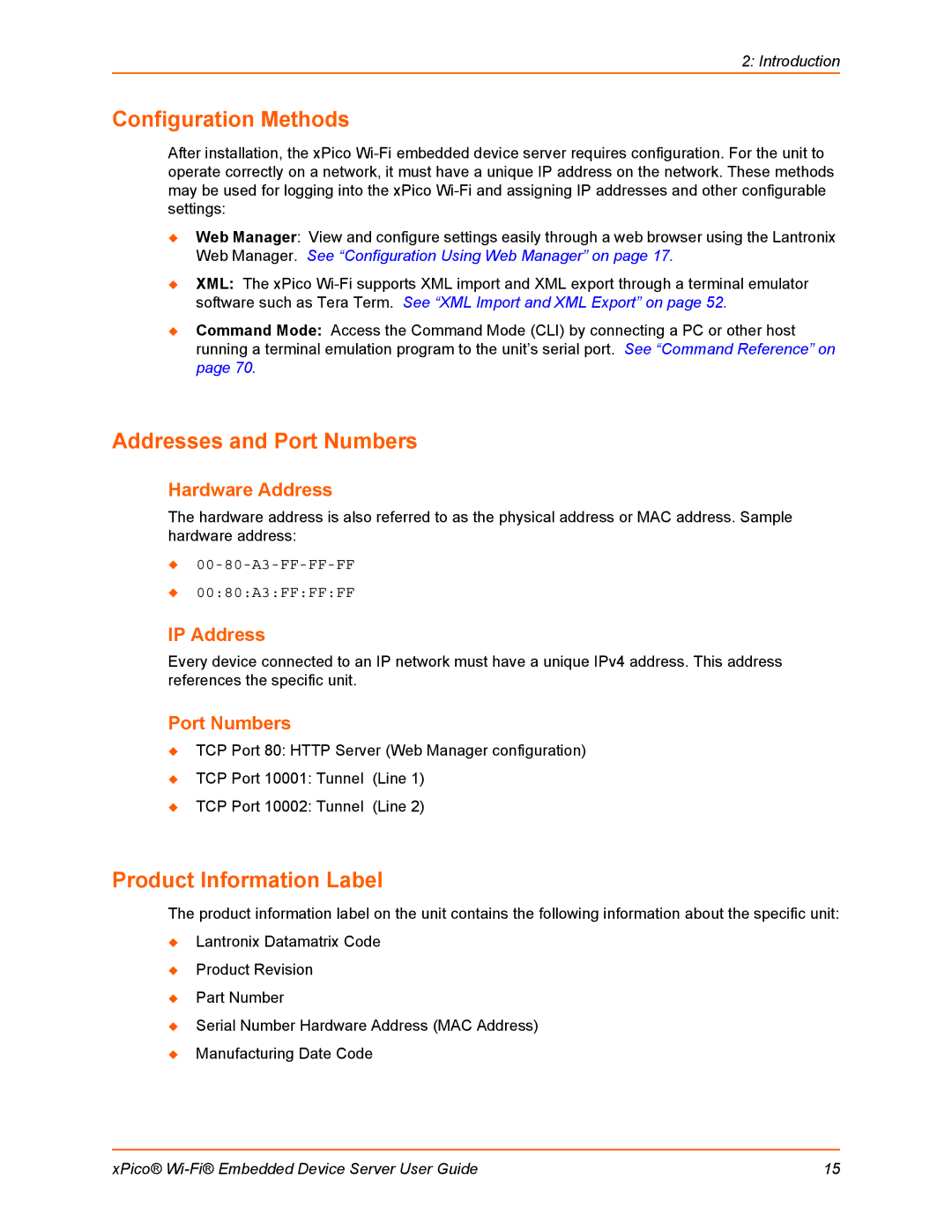
2: Introduction
Configuration Methods
After installation, the xPico
Web Manager: View and configure settings easily through a web browser using the Lantronix Web Manager. See “Configuration Using Web Manager” on page 17.
XML: The xPico
Command Mode: Access the Command Mode (CLI) by connecting a PC or other host running a terminal emulation program to the unit’s serial port. See “Command Reference” on page 70.
Addresses and Port Numbers
Hardware Address
The hardware address is also referred to as the physical address or MAC address. Sample hardware address:
00:80:A3:FF:FF:FF
IP Address
Every device connected to an IP network must have a unique IPv4 address. This address references the specific unit.
Port Numbers
TCP Port 80: HTTP Server (Web Manager configuration)
TCP Port 10001: Tunnel (Line 1)
TCP Port 10002: Tunnel (Line 2)
Product Information Label
The product information label on the unit contains the following information about the specific unit:
Lantronix Datamatrix Code
Product Revision
Part Number
Serial Number Hardware Address (MAC Address)
Manufacturing Date Code
xPico® | 15 |
